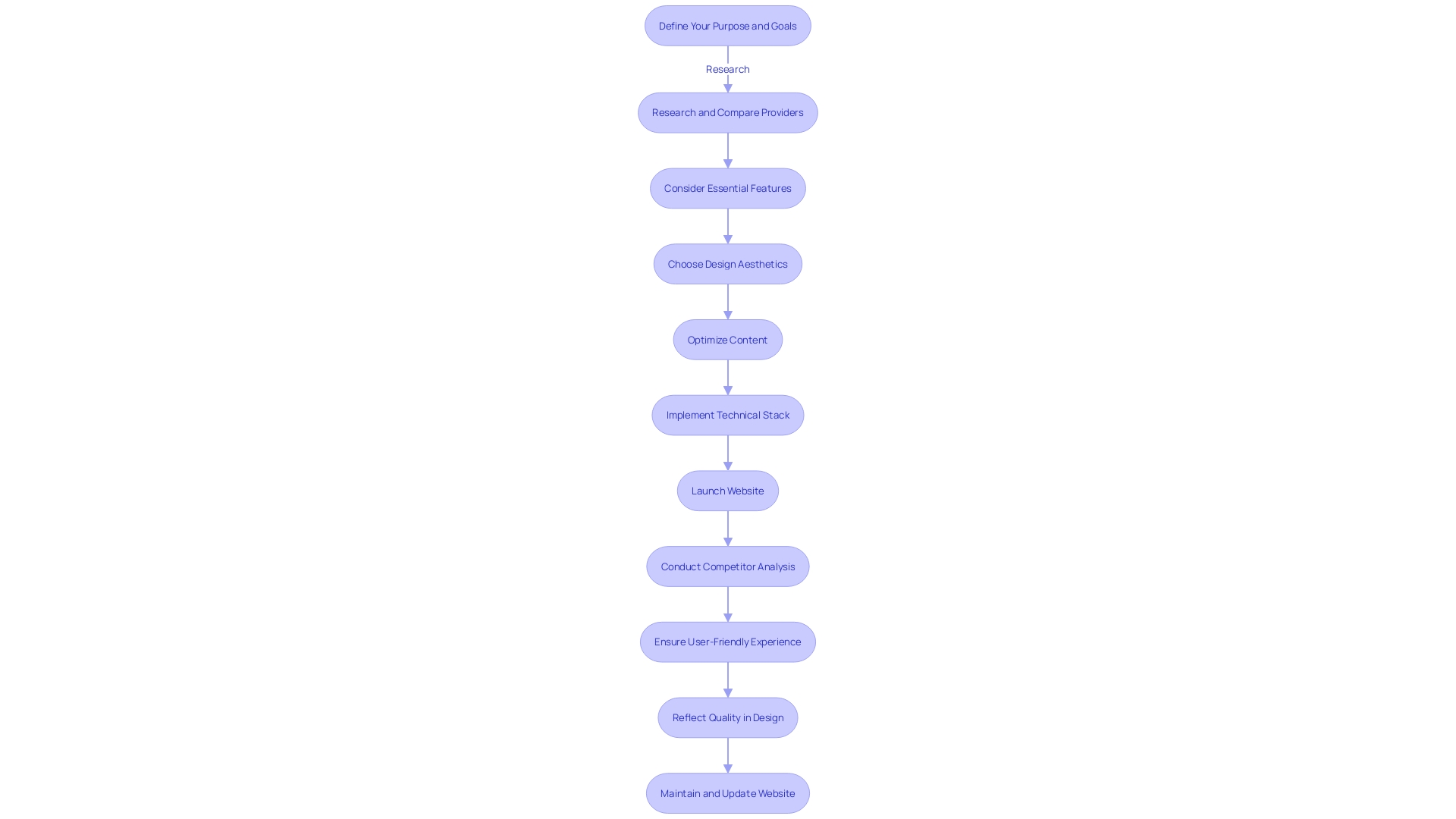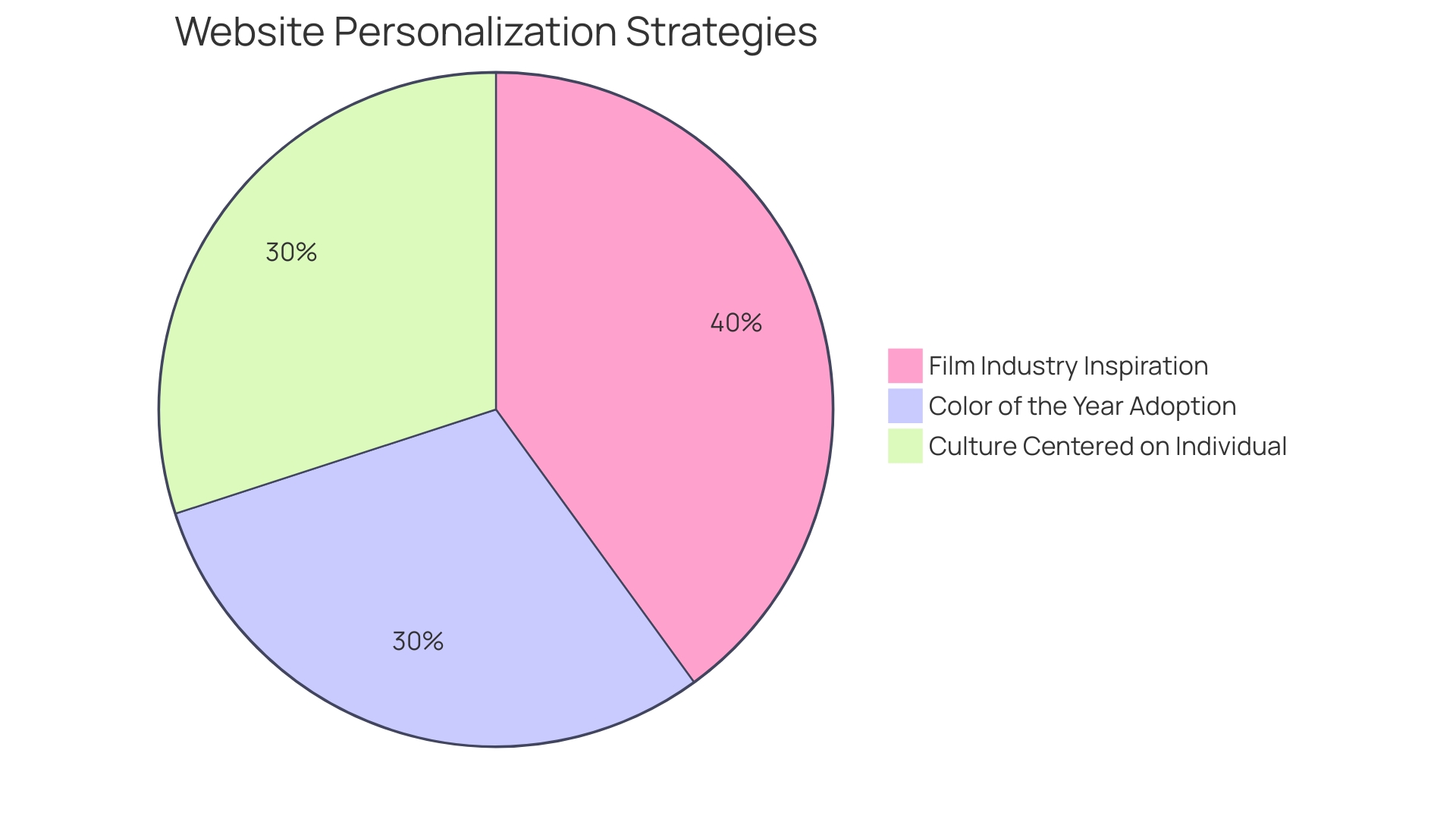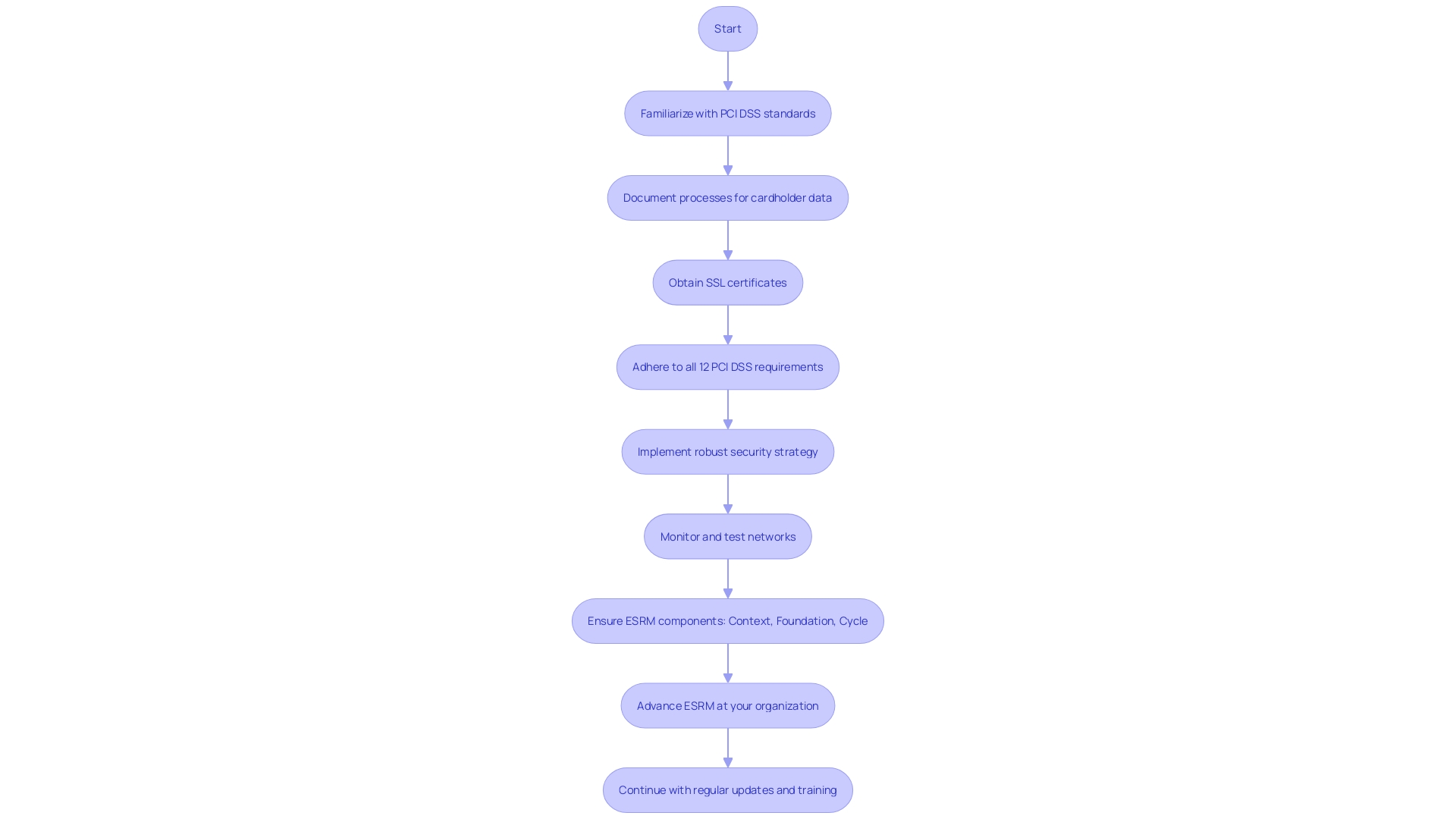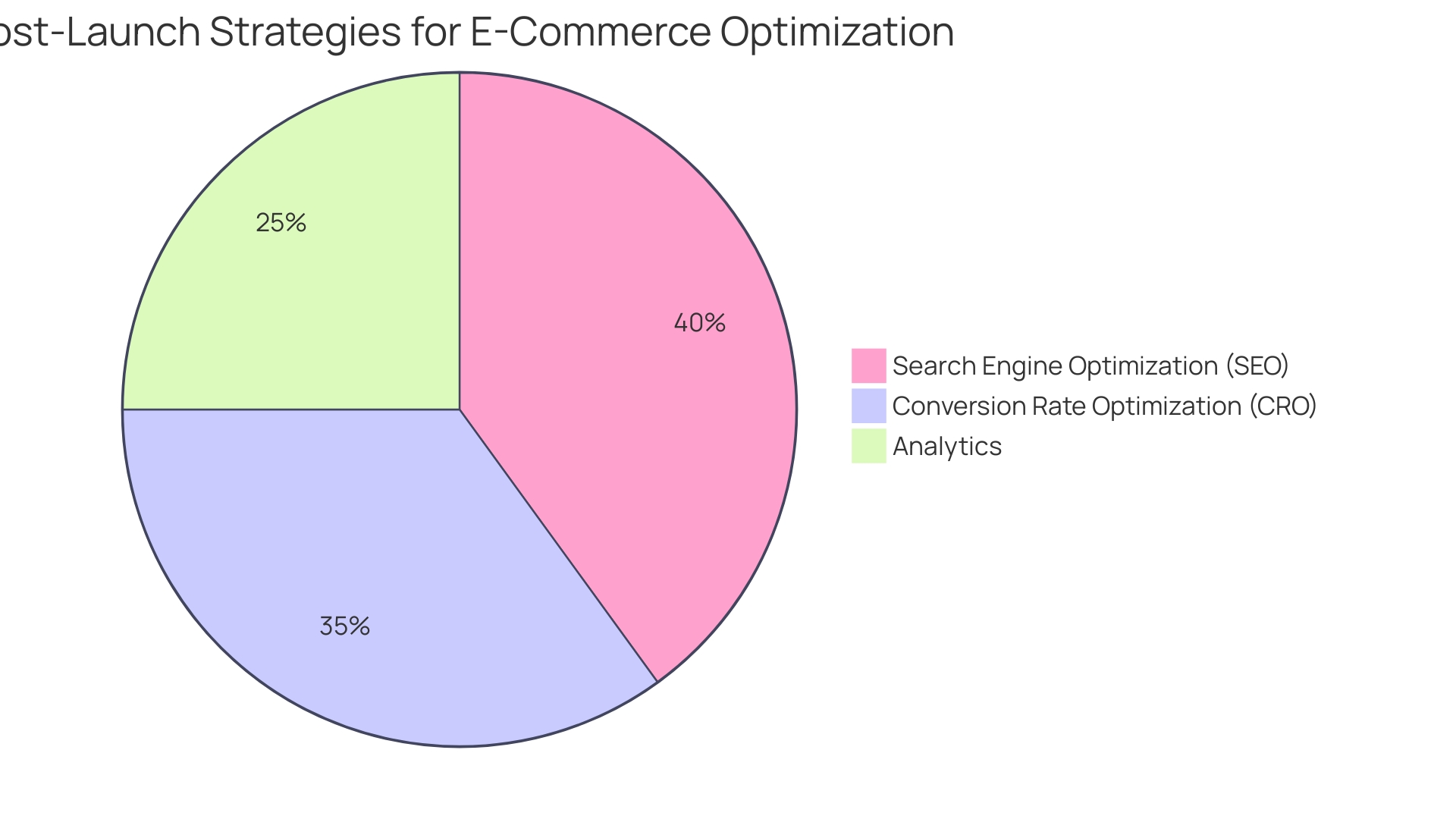Introduction
Embarking on the creation of an e-commerce application requires more than just technical finesse; it demands a deep understanding of your target market. Pinpointing your audience's buying habits and preferences can inform everything from inventory stocking to personalized marketing strategies. In a world where efficiency often eclipses creativity, crafting an e-commerce experience that's not just functional but memorable is crucial.
With AI and machine learning leading the charge in personalization, the potential to tailor your e-commerce platform to the exact preferences of your market is immense. In this article, we will explore the key steps involved in creating a successful e-commerce site, from understanding your target market to post-launch optimization and analytics. By following these steps, you can build an e-commerce application that resonates deeply with your audience and stands tall in a competitive digital economy.
Understanding Your Target Market
Starting the development of an online shopping application demands more than just technical expertise but a profound comprehension of its target users. As the digital marketplace expands, with the Indian online market alone offering a myriad of categories from beauty to electronics, pinpointing your target audience becomes the North Star of your venture. This precision in knowing your customers' buying habits, such as the frequent pairing of products in their shopping carts, can inform everything from inventory stocking to personalized marketing strategies.
The digital landscape is a collage of consumer behavior and economic indicators, including age, income, and interests. In a world where 62% of senior executives recognize efficiency often surpasses creativity, standing out means crafting an online business experience that's not just functional but memorable. With AI and machine learning leading the way in personalization, the potential to customize your online shopping platform to the specific preferences of your market is immense.
As we navigate through an era where the attention of customers is fiercely contested, market research is your ally. It equips you with the insight to ask the right questions about demand and market size, and to identify economic indicators and location-based trends. This is not merely academic; it's a strategic step in reducing risks and establishing a robust go-to-market plan. With the correct data, including industry benchmarks and analysis from prominent market research firms, you can develop an online business application that deeply connects with your audience and stands tall in a competitive digital economy.
Choosing the Right E-commerce Platform
When venturing into the digital marketplace, choosing an e-commerce platform that aligns with your business needs is paramount. It's essential to consider several crucial factors such as scalability, to accommodate business growth without compromising performance. Personalization is another crucial element, enabling you to customize the shopping journey to align with your brand and fulfill the expectations of your clientele. Securing data is crucial, as safeguarding client information is not just about trust but also compliance with regulations. Lastly, pricing structures should align with your budget while providing the necessary features to support your operations.
With the ever-growing importance of user experience in today's market, data science has become an invaluable tool for e-commerce retailers. Insights derived from data science enable businesses to understand consumer personas, purchase patterns, and the effectiveness of different mediums in guiding individuals through their decision-making journey. This intelligence can be pivotal in enhancing customer acquisition and retention strategies.
Shopify, a leader in digital commerce endorsed by Gartner, has set a high bar for platform performance, boasting a track record of over half a trillion dollars in global commerce. It's renowned for its speed, flexibility, and scalability, making it a favored choice among many successful brands.
The online business environment is varied, with choices ranging from PaaS and SaaS to open-source platforms, each serving different business sizes and needs. SaaS platforms are ideal for small businesses seeking easy-to-use, out-of-the-box solutions, while open-source platforms offer greater customization at the expense of requiring more technical expertise.
As we look towards the future, experts predict ongoing shifts in the online business industry, with trends influenced by economic factors. Despite the difficulties encountered by the retail industry in recent years, online shopping remains to acquire an increasing portion of the overall retail market, a proof of its resilience and the changing consumer inclination towards purchasing on the internet.
In summary, the appropriate online trading platform can serve as the foundation of your online business, supporting various aspects from website hosting to transaction processing. It's a digital environment that facilitates not just transactions but also fosters interaction and engagement, playing a pivotal role in your business's success in the digital economy.
Selecting an E-commerce Theme or Template
Choosing the appropriate online business theme or template is a crucial stage in developing a digital platform that not just reflects your brand image but also offers a smooth and captivating shopping journey. A well-designed website is a powerful tool that can significantly influence customer perception and trust. By choosing a design that reflects the aesthetic of your products and services, you create a welcoming digital environment that encourages interaction and transactions.
The visual design of an e-commerce platform is more than just looks; it's about providing a consistent and enjoyable user experience. Utilizing an efficient technical stack, such as Django, Tailwind, and HTMX, alongside a strategic SEO approach that includes thorough competitor analysis and content optimization, creates a strong foundation for your online presence. The main objective is to improve the visibility and user engagement through a well-considered design that encourages ease of use.
Web design approaches vary, from radical redesigns that completely overhaul the look and feel of a site to evolutionary designs that implement incremental improvements. Irrespective of the method, the objective remains unchanged: to provide a digital environment that is accessible, intuitive, and promotes positive customer interactions. Sub-headlines, for instance, play an instrumental role in guiding users through the content, allowing them to quickly identify sections of interest.
In a landscape where mobile usage dominates, understanding and optimizing mobile user experience is non-negotiable. With more than 50% of internet traffic originating from mobile devices, it is crucial to guarantee that your online business platform is compatible with mobile devices. A webpage that loads rapidly and functions effectively on mobile devices not only enhances the probability of recurring visits and conversions but also places your brand favorably in the eyes of the consumer.
Adopting these design principles will set up your online business for success, positioning it to take advantage of trends and consumer expectations as we move forward. The visual appeal of your digital platform is a direct reflection of your brand, and with the right design choices, you can create a compelling online destination that stands out in the ever-growing digital marketplace.

Customizing Your E-commerce Site
Customizing your e-commerce website is not just about standing out; it's about creating a digital environment that resonates with your audience and reflects your brand's unique story and vision. Take inspiration from the film industry's portfolio websites, like the one Alexandra Murgu created for Armor. These locations embody the personal journey and creativity of the individual, pairing emotional resonance with functional design. They demonstrate the importance of having a cohesive system that can be replicated across different pages, ensuring a seamless user experience while still capturing the essence of the brand.
Incorporating the latest web design trends can also significantly enhance the appeal of your website. Agencies like Numiko reveal that layouts once popularized by tech giants are making a comeback, stressing the importance of a modern and sophisticated online presence. For example, adopting the Color of the Year, 'Berry,' a sophisticated mixture of reds and blues, can update your website's color scheme, keeping it fashionable and captivating for visitors.
Understanding that your website consists of HTML-written web pages hosted on always-online web servers allows for global accessibility. This knowledge helps tailor your site to encourage interaction and meet organizational goals. Therefore, personalizing your online trading platform implies more than just cosmetic alterations—it is about establishing an educational, problem-solving environment that enables engagements and transactions worldwide.
Moreover, personalization is key in the digital commerce space. As emphasized in the Gartner® Report, establishing a culture centered around the individual through personalization—such as being aware of a person's preferred coffee selection—can set your business apart in a saturated market. Implement this approach on your online business platform by providing tailored experiences through the 'Channel of Choice,' engaging with customers on their desired channels and improving their shopping experience. Remember, an online store is an investment that returns significantly, especially through channels such as email marketing, which boasts the highest ROI among marketing tactics. Make sure your online business site utilizes these insights to truly differentiate itself and engage with your audience.

Creating Product Listings
Crafting an alluring product listing is a crucial component for increasing sales on your e-commerce platform. It involves creating an engaging narrative around your offerings, utilizing high-quality images, and presenting clear and concise pricing information. Moreover, effective inventory control guarantees that individuals have access to your products when they require them.
To develop the Ryan Gosling of product landing pages, a combination of aesthetics and functionality is key. Start with a clean design that emphasizes your product's messaging, employing a reassuring tone to simplify the purchasing process. An effective Call to Action (CTA) can create a sense of urgency, encouraging shoppers to make a purchase, as demonstrated by the successful Calm health product landing page.
Incorporating user-generated content and reviews can foster trust and influence purchasing decisions, while also providing valuable insight into client preferences. For tangible results, make sure to gather specific data through targeted questions.
When crafting product descriptions, focus on the pragmatic pitch—highlight the advantages your product offers to the consumer. For instance, a brief remark such as, 'These shoes will improve your running performance, enabling greater speed and endurance,' emphasizes the direct advantages to the individual.
Remember to include client testimonials, which serve as social proof of the value provided by your products. Don't underestimate the significance of service information—it's a crucial part of your product's story.
Understanding your e-commerce conversion rates is vital for gauging the effectiveness of your product listings. Benchmarking against industry averages allows you to identify areas for improvement to strive for top percentile performance.
Lastly, consider the power of Google's search engine in driving traffic to your product pages. By analyzing click-through rates (CTRs), you can allocate your marketing efforts more effectively, ensuring that your products are seen by potential buyers.
Setting Up Payment Gateways and Inventory Management
Integrating a secure payment gateway is vital for trust and efficient business operations. Modern payment systems not only facilitate transactions but also improve customer satisfaction with convenient, secure, and personalized financial engagements. Payment Card Industry Data Security Standard (PCI DSS) compliance is a vital aspect, ensuring the protection of cardholder data during transactions. To meet these standards, businesses must incorporate gateways that offer robust security measures.
Furthermore, inventory management is a key component that requires meticulous attention. John Dee's case demonstrates the significance of a detailed analysis to create a system that meets current and future demands, ensuring material flows are efficient and tailored to the business's unique needs. As with payment gateways, inventory systems should be user-friendly and provide real-time tracking for optimal operational control.
Recent innovations, such as the checkout-free store in Dublin Airport, illustrate the advancements in seamless payment experiences. Using Zippin technology, this store enables a seamless purchasing process, showcasing the future potential for online shopping platforms.
In the world of electronic trade, where more than 2.71 billion people engage in online shopping, the implementation of these advanced payment and inventory management solutions is not just advantageous but essential for the continuous expansion and competitiveness of any online business. The integration of Stripe as a unified payment service provider exemplifies the strategic approach to creating a customer-centric payment ecosystem that supports subscriptions and one-off invoices efficiently.
Ensuring Security and Compliance
To fortify the integrity of e-commerce operations, it's essential to implement stringent security measures and adhere to compliance standards. SSL certificates serve as the initial line of defense, encrypting data in transit, thereby safeguarding interactions with your website. Adherence to the Payment Card Industry Data Security Standard (PCI DSS) is not just a recommendation but a mandatory framework for all entities handling cardholder information. This inclusive criteria covers 12 essential needs, each with detailed sub-needs, designed to secure payment processes and safeguard client information. These requirements extend beyond mere encryption, emphasizing the need for a robust security strategy that includes vulnerability management, access control measures, and regular monitoring and testing of networks.
The importance of these practices is exemplified by the experience of leading financial institutions. For example, M&T Bank, a stalwart in the banking industry, has embraced digital transformation, which necessitates the highest level of security to protect sensitive data and transactions. They established Clean Code standards to maintain software performance and security, recognizing the dire consequences of security breaches, such as reputational damage and financial loss.
Moreover, the evolving retail landscape, as illustrated by the adoption of checkout-free stores using advanced technologies, emphasizes the need for robust cybersecurity. Retailers are increasingly expected to prioritize cyber safety, making it an essential part of their business strategy to ensure the trust and safety of individuals who purchase their products.
In line with these developments, Google has updated its policies to categorize and address different types of software-related threats, ensuring that advertisements and listings on its platform do not contribute to the distribution of malicious software.
To surmount the challenges associated with securing digital platforms, organizations have pursued centralized security solutions, simplifying the task of monitoring and analyzing threats. Such centralization not only enhances efficiency but also aids in meeting compliance requirements more effectively.
The scope of data protection continues to expand globally, with various governing bodies establishing regulations that mandate the ethical management and secure handling of data. As cyber risks remain prominent, it is crucial for all sectors, especially retail, to adopt indigenous approaches to data security that align with these regulations.
In essence, the security and compliance of online business transactions are essential elements that demand careful attention to safeguard customer information and uphold trust. By embracing industry best practices and standards, businesses can mitigate risks and position themselves for long-term success in the digital marketplace.

Testing and Launching Your E-commerce Site
Ensuring that your e-commerce website functions flawlessly and provides an optimal user experience is a critical step before going live. It's not just about checking if the webpage functions; it's about making it accessible and efficient across various browsers and devices. This involves a meticulous process of testing, which includes verifying the site's functionality, evaluating its user-friendliness, and confirming its compatibility with different browsers.
Functionality testing examines all the crucial features of your website to ensure they work as intended. This encompasses everything from the shopping cart and checkout processes to search functions and form submissions. It's essential to address the needs of all users, including those with disabilities who rely on assistive technologies, such as screen readers or keyboard navigation. By doing so, you not only comply with accessibility standards but also widen your market reach.
Usability testing focuses on the user's journey throughout your website. It assesses how intuitive and easy it is to navigate, find information, and complete transactions. A user-friendly website can significantly enhance customer satisfaction and loyalty. Notable e-commerce players like Bol have demonstrated the benefits of continuous usability improvements, with tangible enhancements leading to better accessibility scores.
Cross-browser compatibility testing is another vital area, as it ensures your website delivers a consistent experience across different web browsers, versions, and devices. The diversity in user environments poses a challenge, but with strategic testing, informed by comprehensive guides like those from pCloudy, you can overcome these obstacles. This step is crucial because even small inconsistencies can result in a decrease in patronage and revenue.
As the online shopping landscape evolves, with AI and creative solutions shaping the industry, your website needs to stand out not just in appearance and offerings but also in performance and reliability. In a competitive environment where customer attention is a scarce resource, a well-tested website that delivers a seamless and inclusive user experience is a powerful asset for any business.
Post-Launch Optimization and Analytics
Optimizing your e-commerce platform after its launch is a continuous and dynamic process. Leveraging the power of search engine optimization (SEO) is crucial, as it tailors your site to the guidelines of search engines like Google, which commands over 93% of the market share. A meticulous SEO strategy allows you to enhance user experience and facilitate access to valuable information, thereby building trust and authority in your industry. Keyword research is instrumental in this—finding terms with high search volume, low ranking difficulty, and strong purchase intent is essential.
Another vital aspect is conversion rate optimization (CRO), which focuses on increasing the percentage of visitors who take a desired action, such as making a purchase. It's a data-driven technique that involves understanding user interactions, identifying conversion barriers, and testing solutions. With effective CRO, you can extract more value from your existing traffic, thereby boosting your marketing ROI and fostering customer loyalty.
Lastly, analytics play a pivotal role in understanding your site's performance. Tracking metrics and analyzing user behavior can provide insights into where improvements can be made. As evidenced by a mobile marketing report, benchmarking activation performance across industries can guide your optimization efforts. Remember, the goal is to move your metrics in the right direction without necessarily increasing your marketing budget. By focusing on these post-launch strategies, you set your e-commerce venture on a path to sustained growth and success.

Conclusion
In conclusion, creating a successful e-commerce site requires a deep understanding of your target market and their buying habits. By conducting thorough market research and utilizing AI and machine learning, you can tailor your platform to the exact preferences of your audience.
Choosing the right e-commerce platform, such as Shopify, is crucial for scalability, customization, security, and pricing. A well-designed e-commerce theme or template that reflects your brand identity and provides a seamless shopping experience is essential.
Customizing your e-commerce site goes beyond aesthetics. It involves creating an informative, solution-driven space that resonates with your audience and facilitates interactions and transactions on a global scale. Personalization and incorporating the latest design trends are key.
Crafting compelling product listings, incorporating user-generated content and reviews, and focusing on customer benefits are crucial for increasing sales. Implementing secure payment gateways and efficient inventory management systems are essential for customer trust and streamlined operations.
Ensuring security and compliance, such as SSL certificates and PCI DSS compliance, is vital to protect customer information and maintain trust. Testing your e-commerce site before launch for functionality, usability, and cross-browser compatibility is crucial.
Post-launch optimization through SEO, conversion rate optimization, and analytics is a continuous process that helps enhance user experience and drive sustained growth. By following these key steps and continuously optimizing your e-commerce site, you can create an exceptional online shopping experience that resonates with your audience and positions your business for success in the digital economy.





